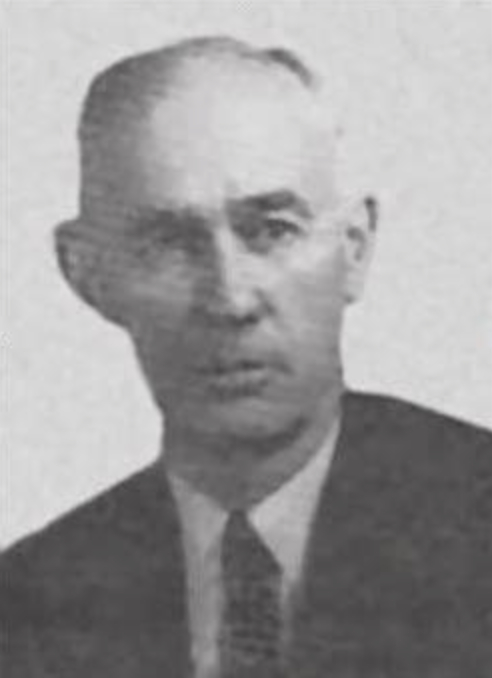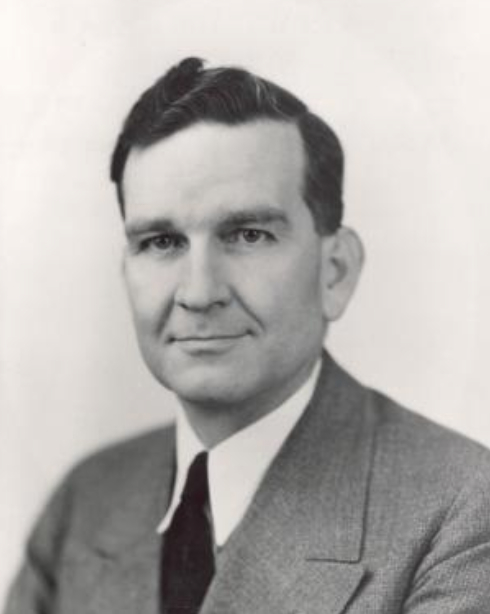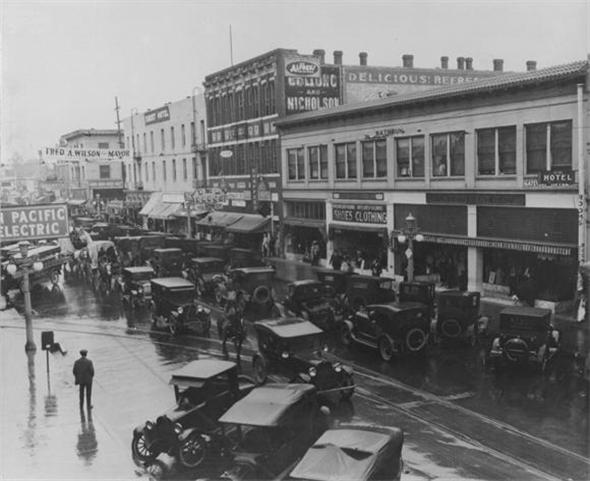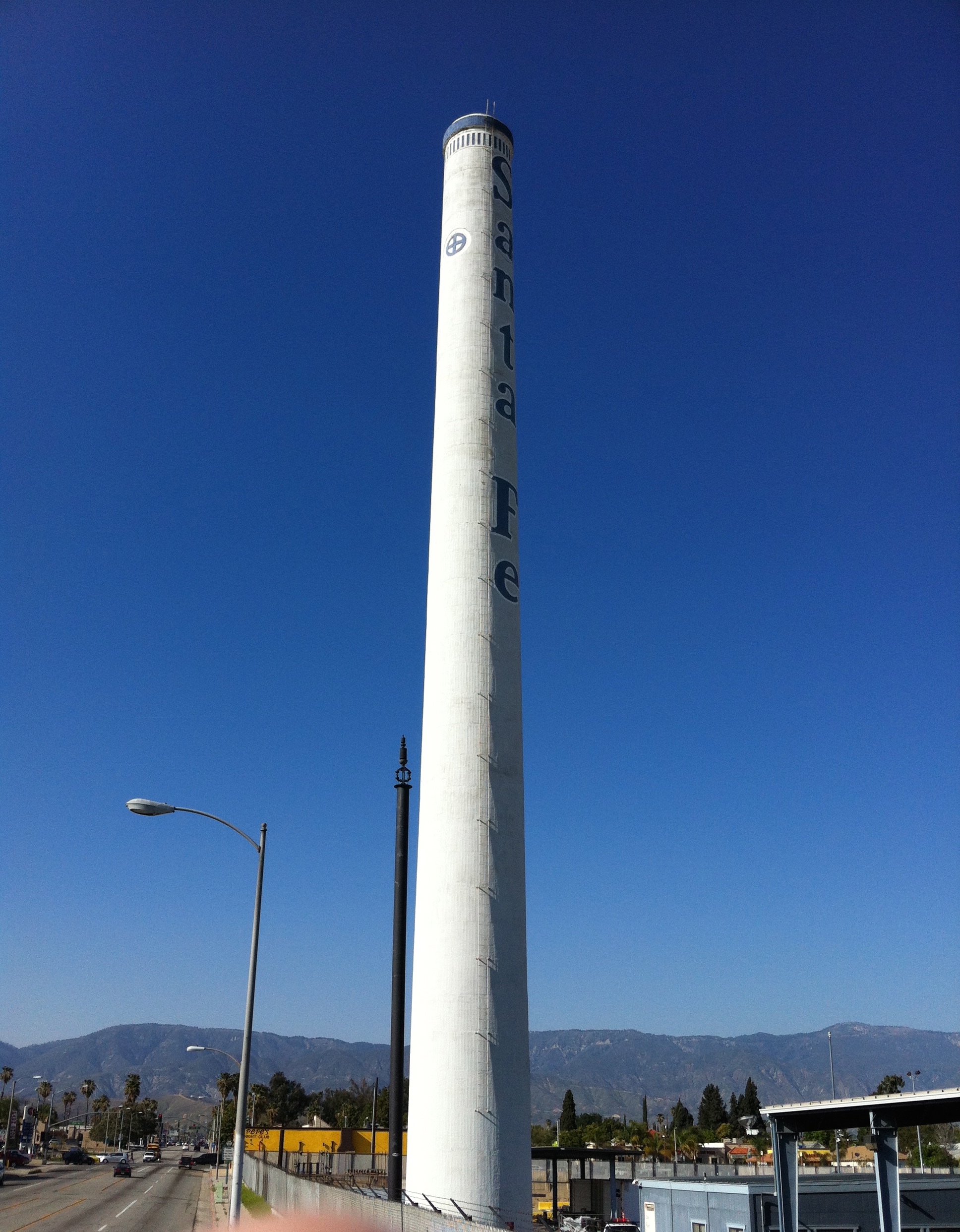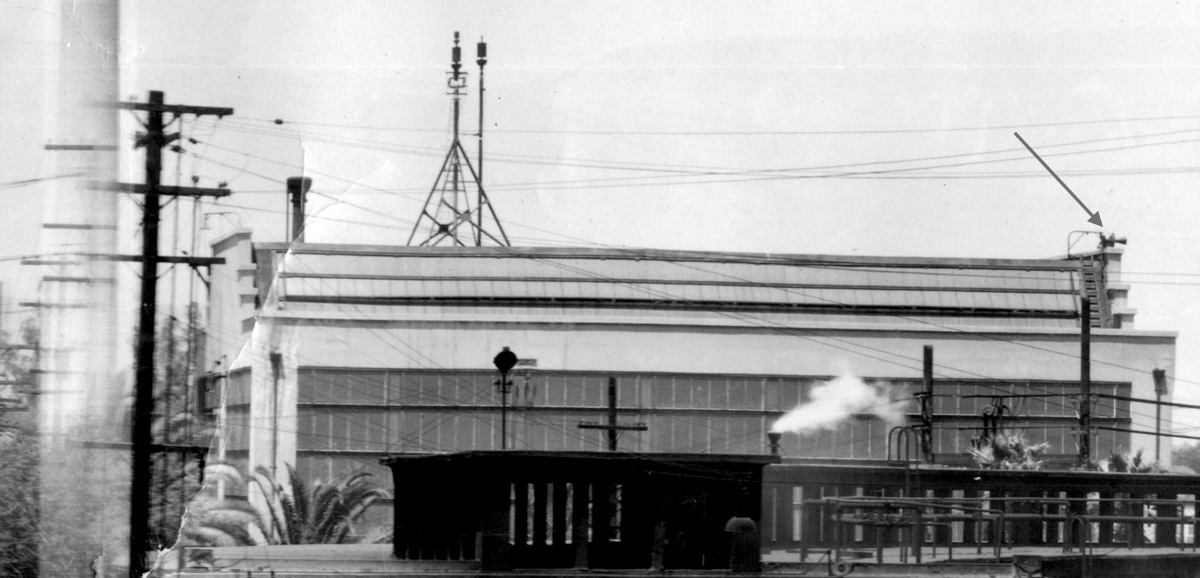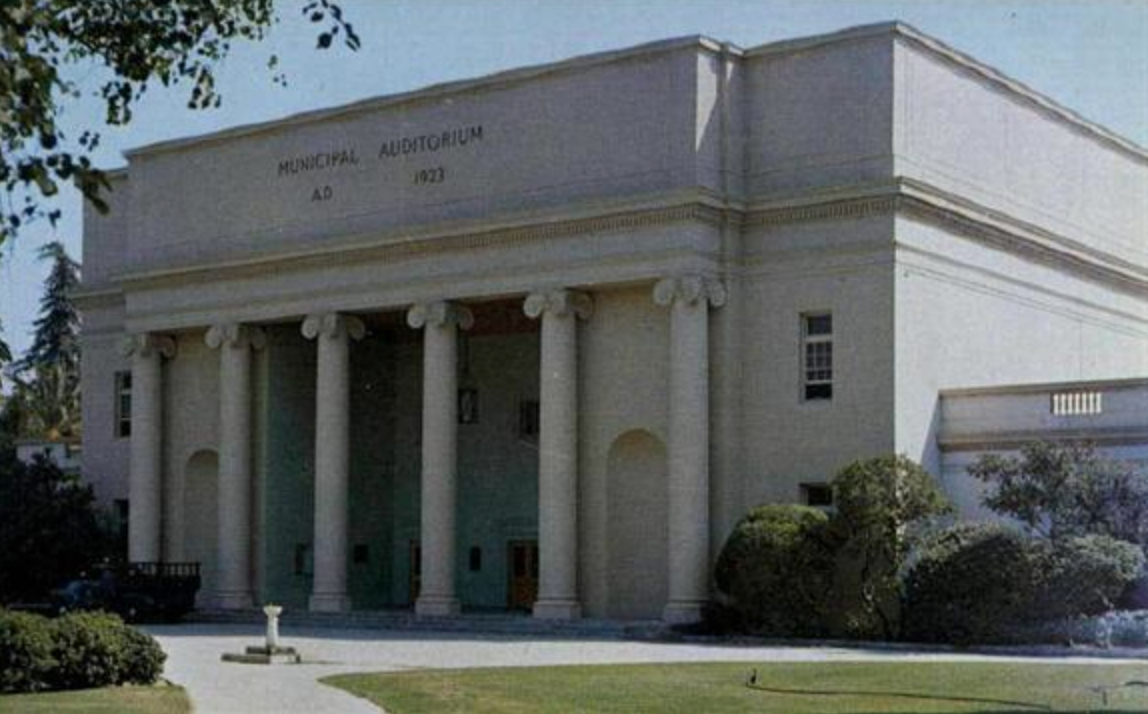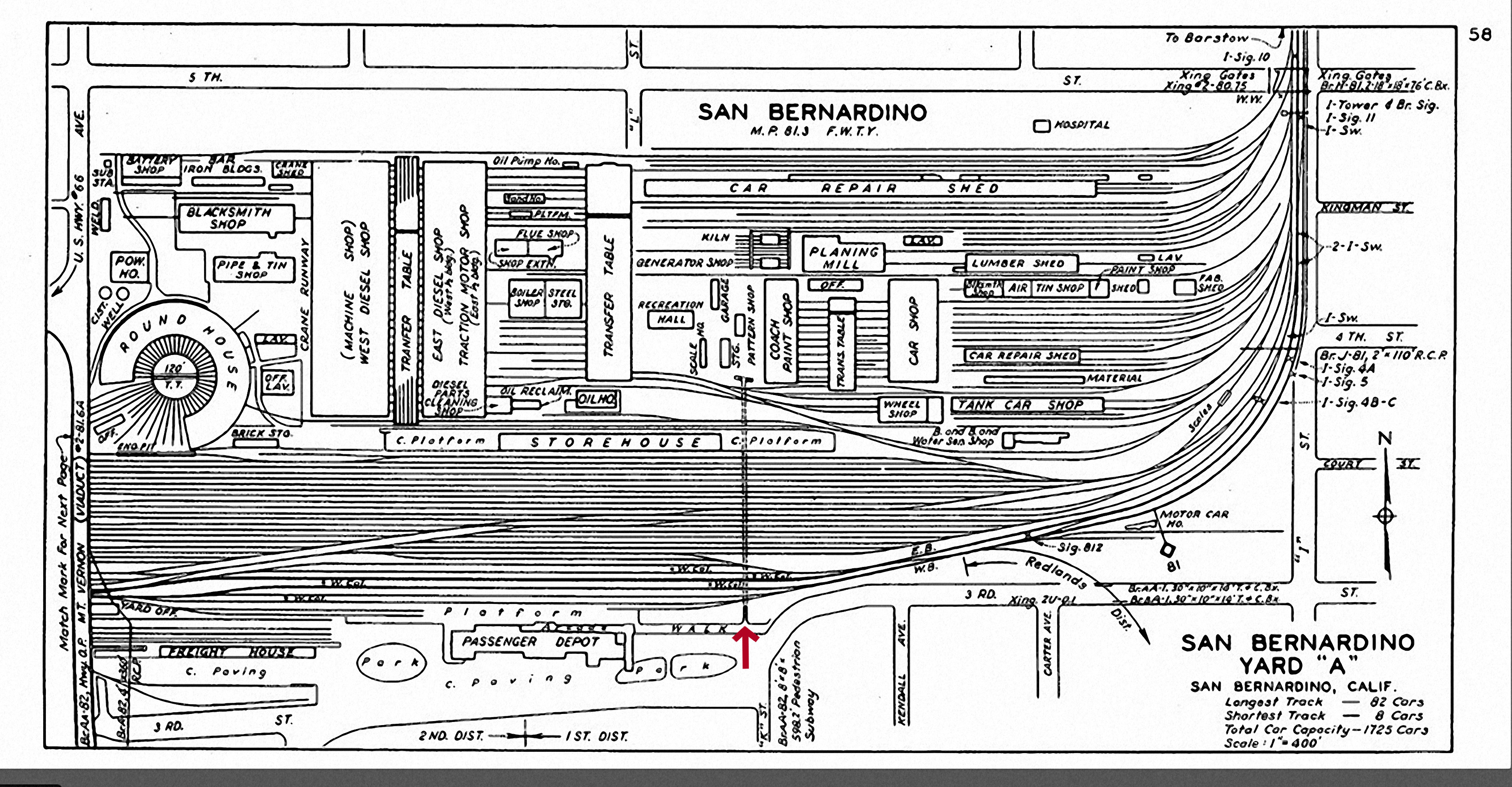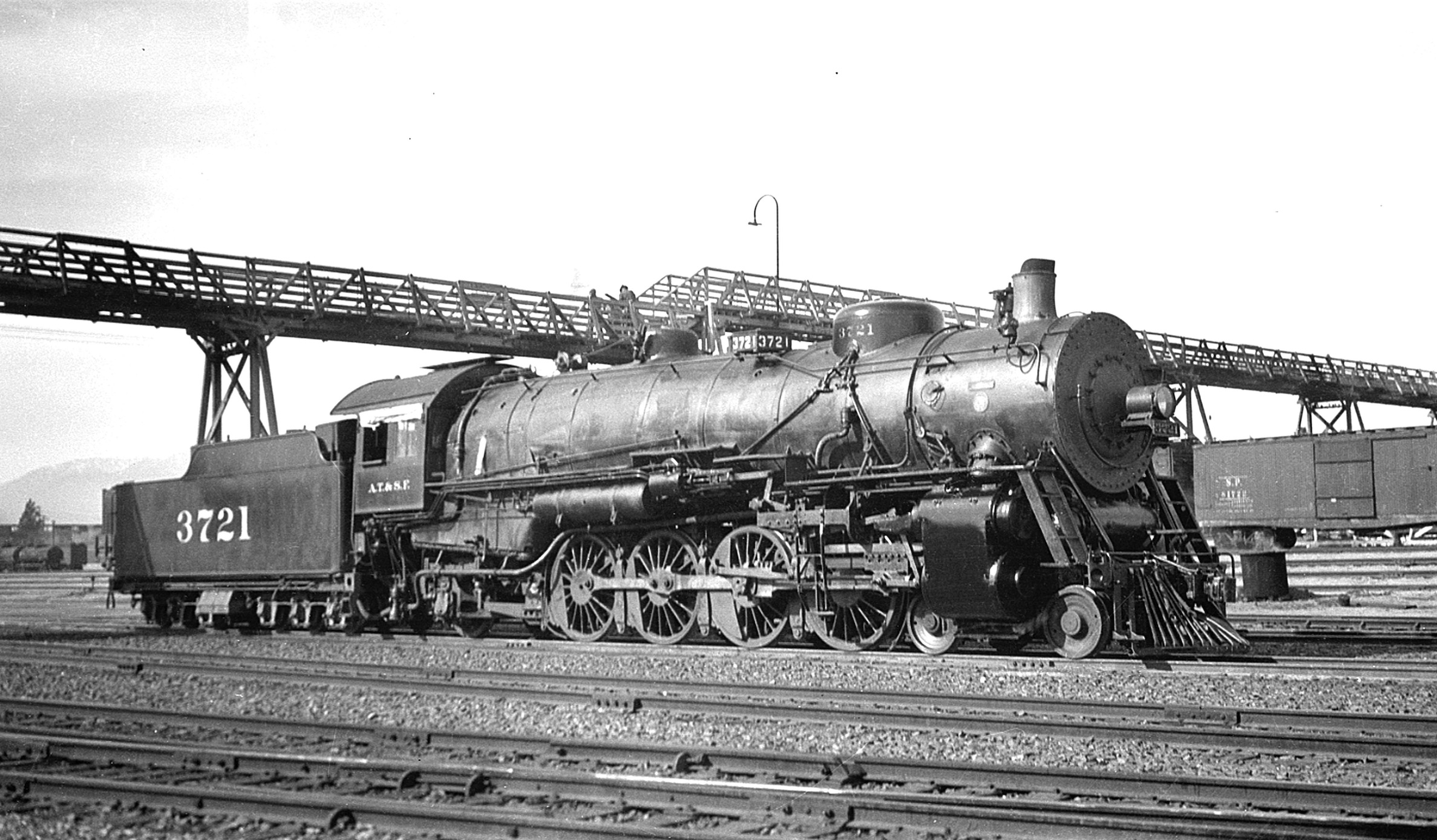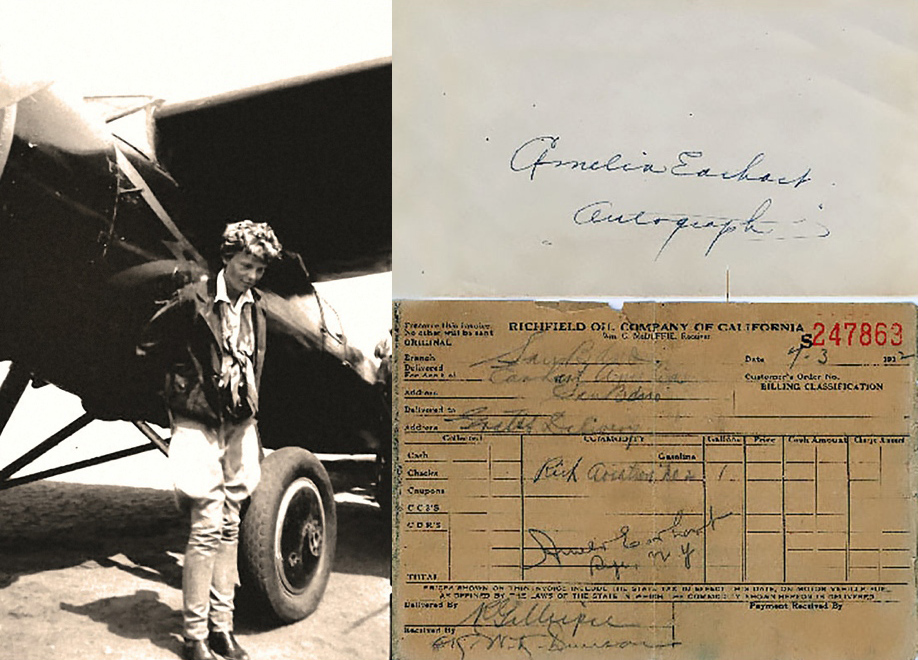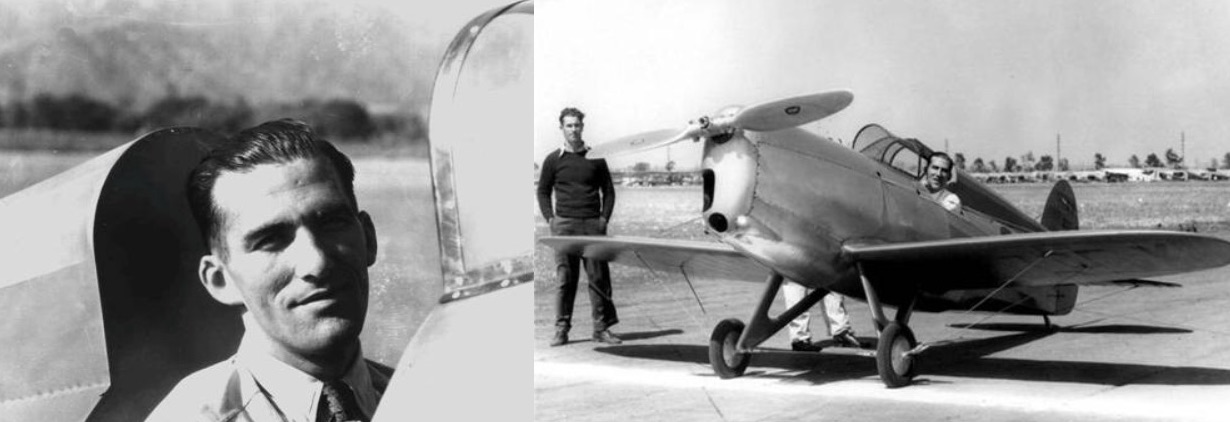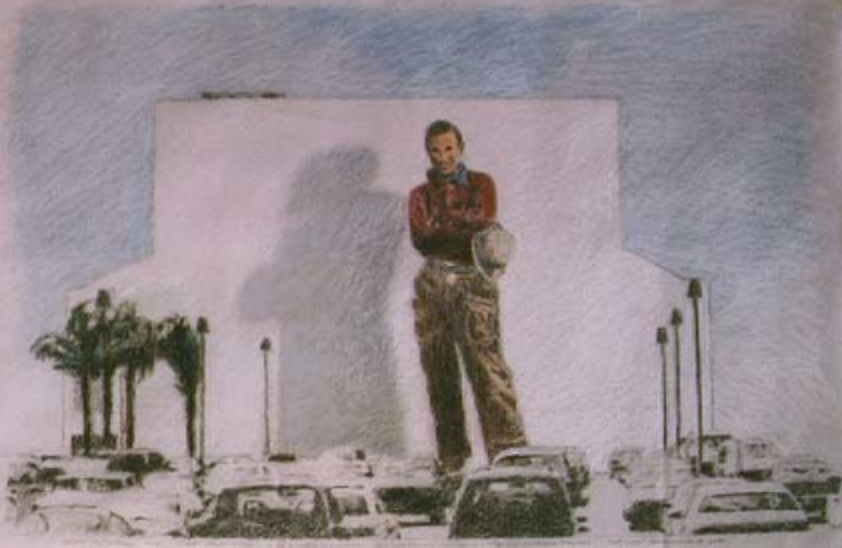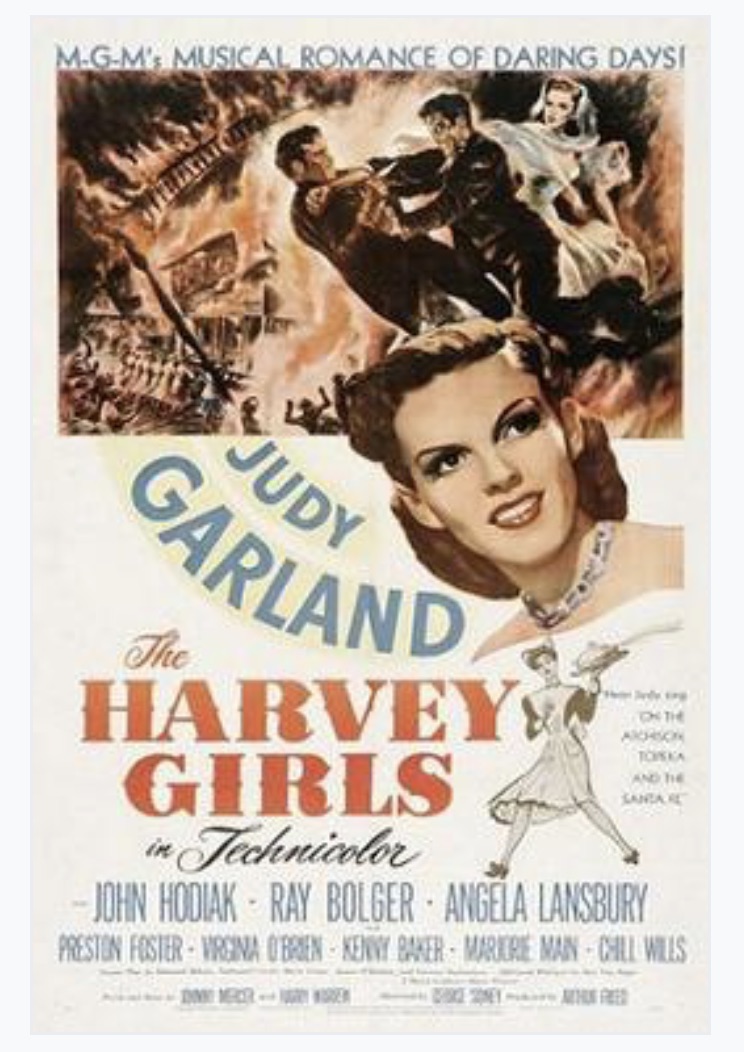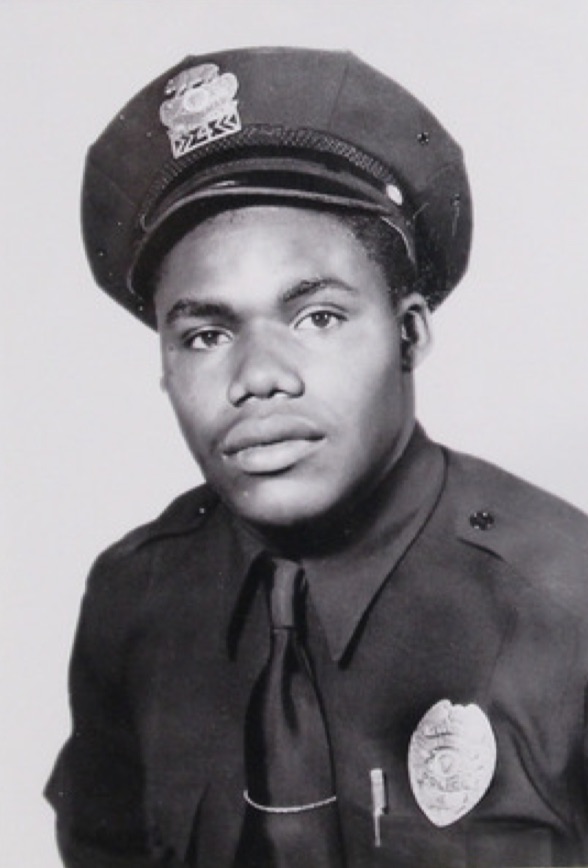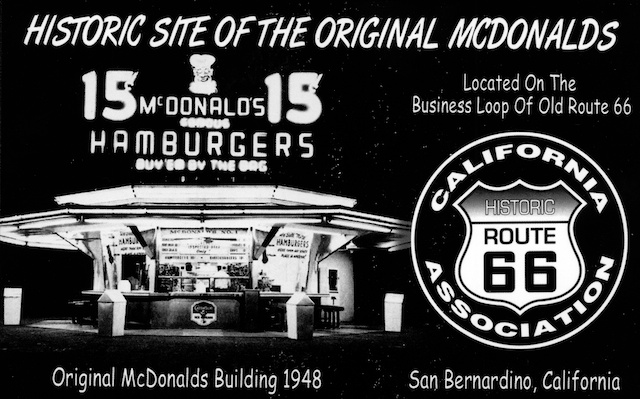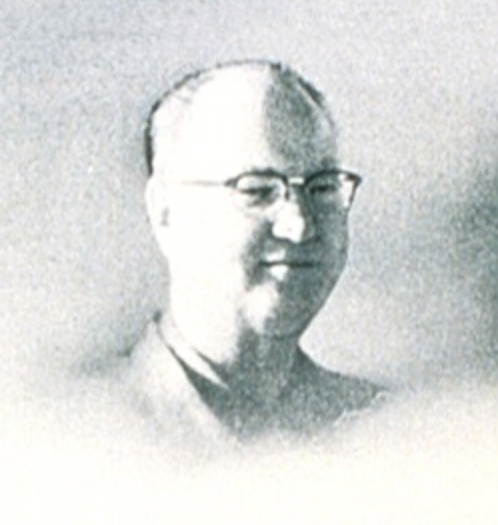April 10, 1926 - New Santa Fe Shops
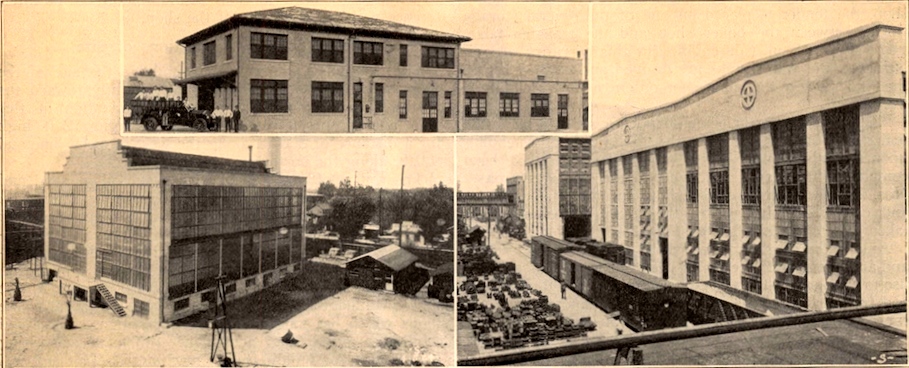 Complete View of Modern Steam Boiler Plant; Fire Department Building: also Containing Shop; Men's Assembly Hall; and Boiler and Machine Shops from South End (Railway Age, April 10, 1926)
Complete View of Modern Steam Boiler Plant; Fire Department Building: also Containing Shop; Men's Assembly Hall; and Boiler and Machine Shops from South End (Railway Age, April 10, 1926)
Santa Fe Completes Reconstruction of Coast Line Shops
Locomotive repair plant at San Bernardino is rebuilt on enlarged scale and fully equipped with the latest labor-saving machinery.
The major part of the extension to the locomotive department at San Bernardino began in 1922 and will be completed this year [1926]. The new shops occupy the site of the old shops established in 1887.
The new plant includes a 43-stall engine house and a repair plant having a shop capacity of 315 freight cars and 30 passenger cars.
The most important building in the locomotive repair plant is the 673-ft. machine shop made up of three bays: a 90-ft. erecting bay next to the transfer table; a light machine bay of 46 feet and a heavy machine bay of 65 feet.
The boiler shop (also 673 feet in length) is 164 feet wide being made up of two bays, the erecting bay 90 feet wide, and the machine bay 74 feet wide.
Both the locomotive and boiler shops are of the transverse type and contain 30 pits and 29 pits respectively and both of these buildings face a transfer table of 65 feet.
Another transfer table 120 feet in length is situated 260 feet east of the boiler shop.
The fire-proof power plant is 103 feet long and 81 ft. 9 in. wide. A concrete wall longitudinally down the center of the building divides the boiler room and the engine room. The boilers are oil fired but the boiler room affords adequate space for the installation of coal handling equipment.
Other new facilities include: a 306 ft. blacksmith shop; the flue shop; sheet metal and flue storage shop; a concrete building used for reclaiming oil; another for reclaiming magnesia lagging; a shed for storing fire brick; a new two-bay fire station; a new hospital; offices and an apprentice school; and an extention of the 1909 fireproof storehouse and construction of a new platform.
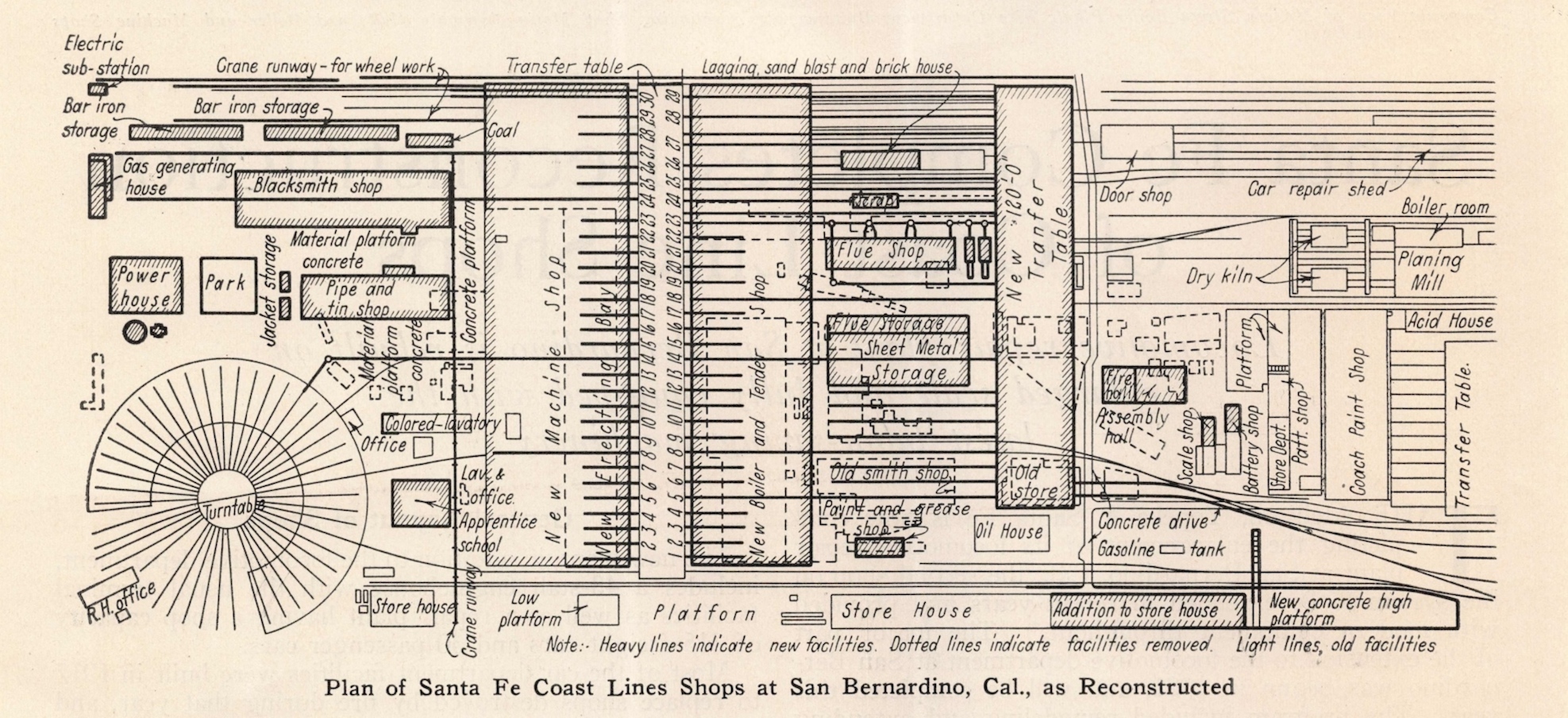
(Extracted from the April 10, 1926, issue of Railway Age)
Click here to see additional track charts.

 Share Article
Share Article 
